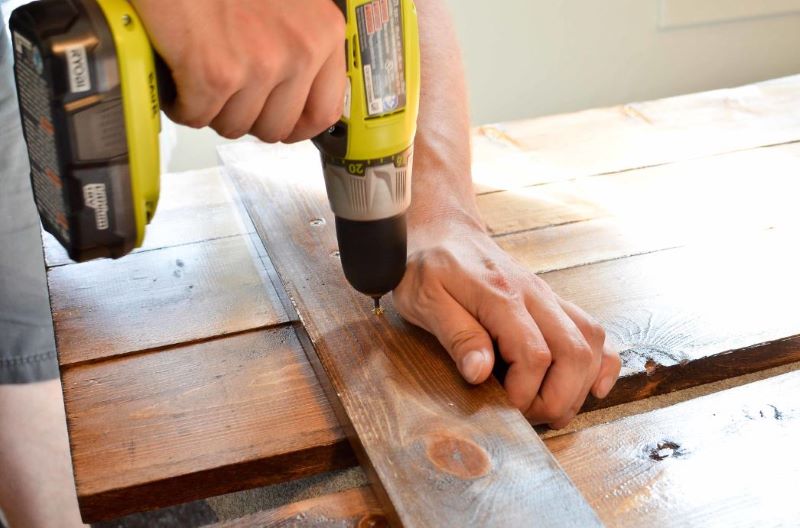Screw it right: A guide to choosing the perfect fastener for your home renovation project
Are you in the midst of a home renovation project? If so, you know that selecting the best fasteners for your project can often mean the difference between success and failure. Knowing which type of screw or bolt will provide optimal strength and performance for a specific application is essential. Still, trying to make sense of all the mounting options available today can be confusing.
We’ve compiled this guide to help demystify choosing the perfect fastener. We’ll provide an overview of various types of screws, bolts, anchors, and other connection solutions, as well as tips and tricks on how best to use them for your next construction project. So, if you’re ready to get started securing those materials together – let’s jump right in.
Understand the different types of fasteners and when to use each one
Fasteners are essential to any construction project, and understanding their various types is crucial in ensuring structural integrity and safety. Bolts, screws, nuts, and washers are some of the most commonly used fasteners, and each has its unique purpose. Bolts are ideal for fastening two or more materials together, while screws are suitable for attaching various materials. Nuts, on the other hand, secure bolts and screws to prevent them from loosening, while washers distribute pressure and prevent damage to surfaces.
Proper knowledge of these fasteners and their applications ensures that a construction project is executed seamlessly and without complications. Always use the correct type of fastener for each application to guarantee structural stability and safety. A pan head phillips screw for example, is perfect for use in drywall applications, while a hex bolt is well suited for heavy-duty structural projects.
Consider the material you are working with and how it will affect your choices of fasteners
When choosing a suitable fastener for your project, it’s crucial to consider the type of material you are working with. Different materials may require other fasteners to ensure a secure and long-lasting connection. For example, wood projects typically require wood screws as they have coarse threads that grip the wood fibers tightly. On the other hand, metal materials often require self-tapping screws designed with a sharp point to drill their hole, eliminating the need for pre-drilling.
It’s also essential to consider your project’s weight and load capacity when selecting fasteners. Heavy-duty structural projects may require bolts or anchor bolts, while lighter-weight materials may only need smaller screws. Always consult with a professional or refer to manufacturer guidelines when determining the appropriate fasteners for your specific materials and application.
Learn about the advantages and disadvantages of using screws versus nails for your project
Screws and nails are often used interchangeably, but each has its unique advantages and disadvantages. Screws, for example, provide a stronger hold due to their threading and can be easily removed if necessary. They also allow for greater precision during installation as they can be driven into place without the risk of bending or splitting the material.
Nails, however, are quicker, easier to install, and often cost less. However, they may not provide as strong of a hold as screws, especially in materials like drywall or particle board. Consider the specific needs of your project when deciding between screws and nails.
Familiarize yourself with different screw sizes and shapes to ensure a secure fit
Screws come in a variety of sizes and shapes, each designed for specific applications. Understanding these differences is crucial in ensuring a secure fit and proper installation. Common screw types include flat head, round head, pan head, and hex head screws.
The size of the screw is also an essential factor to consider. Screws that are too small may not provide enough strength, while screws that are too large may cause damage to the material. It’s crucial to select the appropriate size and shape of screw for each specific application.
Research the best practices for using screws in various DIY projects, such as furniture assembly or drywall installation
Different DIY projects may require various techniques when it comes to using screws. It is crucial to thoroughly research and comprehend the best practices for each specific type of project. For instance, when assembling furniture, pre-drilling precise holes and utilizing a drill rather than a screwdriver to safeguard the material from any potential damage is essential.
Likewise, when it comes to drywall installation, specific techniques such as evenly spacing screws and avoiding over-tightening them should be employed to prevent any unsightly cracks in the drywall.
Remember, always take the time to conduct thorough research and gain a comprehensive understanding of the best practices for using screws in your particular DIY project. Doing so will ensure a successful and long-lasting result you can be proud of.
Know how to properly anchor a screw into different materials, such as wood, concrete, and metal
Anchoring a screw securely into different materials is crucial for maintaining the stability and safety of your project. The process can vary depending on the type of material, so it’s essential to understand how to anchor screws into wood, concrete, and metal properly.
When working with wood, pre-drilling holes slightly smaller than the diameter of the screw can prevent splitting or damage to the material. In concrete, a specialized anchor or masonry screw may be necessary. For metal materials, self-tapping screws are usually the best option.
Be sure to follow proper anchoring techniques for each specific material to ensure your screws stay in place and provide a secure connection. Failure to do so could result in instability and potential safety hazards.








